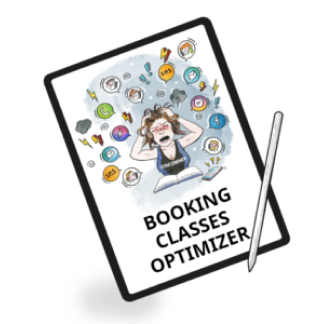The fitness industry has seen a significant shift in recent years, with the rise of online classes and digital platforms. However, traditional brick-and-mortar gyms still have a lot to offer. The key to success in this evolving landscape is to find a balance between online and offline offerings. This article will guide you through the strategies to effectively combine online and offline classes in your gym.
The Importance of a Hybrid Model
A hybrid model that combines both online and offline classes offers the best of both worlds. It provides the accessibility and convenience of online classes while retaining the community and hands-on coaching that come with in-person sessions. This approach can help you reach a broader audience and meet the diverse needs of your members.
Strategies for Combining Online and Offline Classes
1. Seamless Scheduling
One of the first steps in combining online and offline classes is to create a seamless scheduling system. This system should allow members to easily switch between online and in-person classes, depending on their needs and preferences.
2. Consistent Branding and Quality
Whether a class is online or offline, the quality and branding should be consistent. Use the same instructors, music, and even lighting to create a unified experience across both platforms.
3. Integrated Membership Plans
Offer membership plans that include access to both online and offline classes. This gives members the flexibility to choose how they want to engage with your gym, increasing the value proposition.
4. Cross-Promotion
Use each platform to promote the other. For instance, offer free trial online classes to in-person members and vice versa. This can encourage members to take advantage of both offerings.
5. Community Building
Leverage social media and community forums to build a sense of community among both online and offline members. Regularly share success stories, tips, and updates that are relevant to both groups.
6. Personalized Coaching
Offer personalized coaching sessions that can be conducted either online or in-person. This adds a layer of customization to your services and allows you to cater to individual needs.A robust fitness app development approach can ensure that members receive tailored exercise routines, whether they choose to engage in virtual sessions or attend classes physically.
7. Special Events
Host special events that are accessible both online and in-person. This could be a guest speaker, a special workout session, a unique Black Friday discount, or a community-building activity. Make sure to stream the event online for members who can’t attend in person.
8. Feedback Mechanism
Implement a robust customer feedback mechanism using surveys to understand what members like or dislike about both online and offline classes. Use this data to make informed decisions and improvements.
9. Tech Support
For online classes, ensure that you have a reliable tech support team to assist members who may be new to the digital platform. This will enhance the user experience and reduce drop-offs.
10. Resource Sharing
Create a resource hub that is accessible to both online and offline members. This could include workout plans, nutritional guides, and other fitness-related content.
11. Virtual Tours and Demos
Offer virtual tours of your physical gym space and demos of your online platform. This can help prospective members get a feel for both environments, making it easier for them to decide which option suits them best.
12. Hybrid Challenges and Competitions
Organize fitness challenges or competitions that incorporate both online and offline activities. For example, you could have a month-long fitness challenge where participants earn points for attending both online and in-person classes, with prizes for the top scorers.
13. Loyalty Programs
Implement a loyalty program that rewards members for participating in both online and offline classes. Points could be earned for each class attended, regardless of the format, and redeemed for merchandise, free classes, or other perks.
14. Accessibility Features
Ensure that both your online and offline classes are accessible to people who speak different languages.. For online classes, this could mean offering Spanish and Italian translations or sign language interpreters for those with hearing disabilities, as well as automatically translating content for additional materials. For in-person classes, make sure your facility is wheelchair-accessible and that instructors are trained to work with members who have special needs.
By adding these strategies to your existing plan, you can create a more robust and inclusive hybrid model that appeals to a wider range of members. Each of these strategies adds a layer of engagement, flexibility, or inclusivity, making your gym’s offerings more attractive and comprehensive.
Implementation Steps
- Pilot Testing: Before fully launching, consider running a pilot program to test the feasibility and reception of the hybrid model.
- Staff Training: Train your staff to manage and operate both online and offline classes efficiently.
- Member Onboarding: Create an effective onboarding process to guide new members through the various offerings.
- Performance Metrics: Regularly track and analyze key performance metrics to assess the success of the hybrid model.
Conclusion
Combining online and offline classes in your gym can offer a more flexible and comprehensive fitness solution for your members. By implementing a seamless scheduling system, maintaining consistent quality, and offering integrated membership plans, you can create a hybrid model that meets the diverse needs of your customer base. With careful planning and execution, this approach can significantly enhance your gym’s value proposition and set you up for long-term success.


